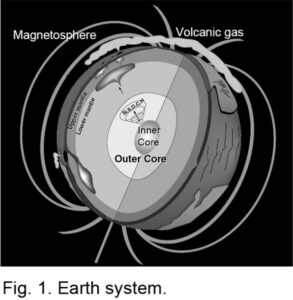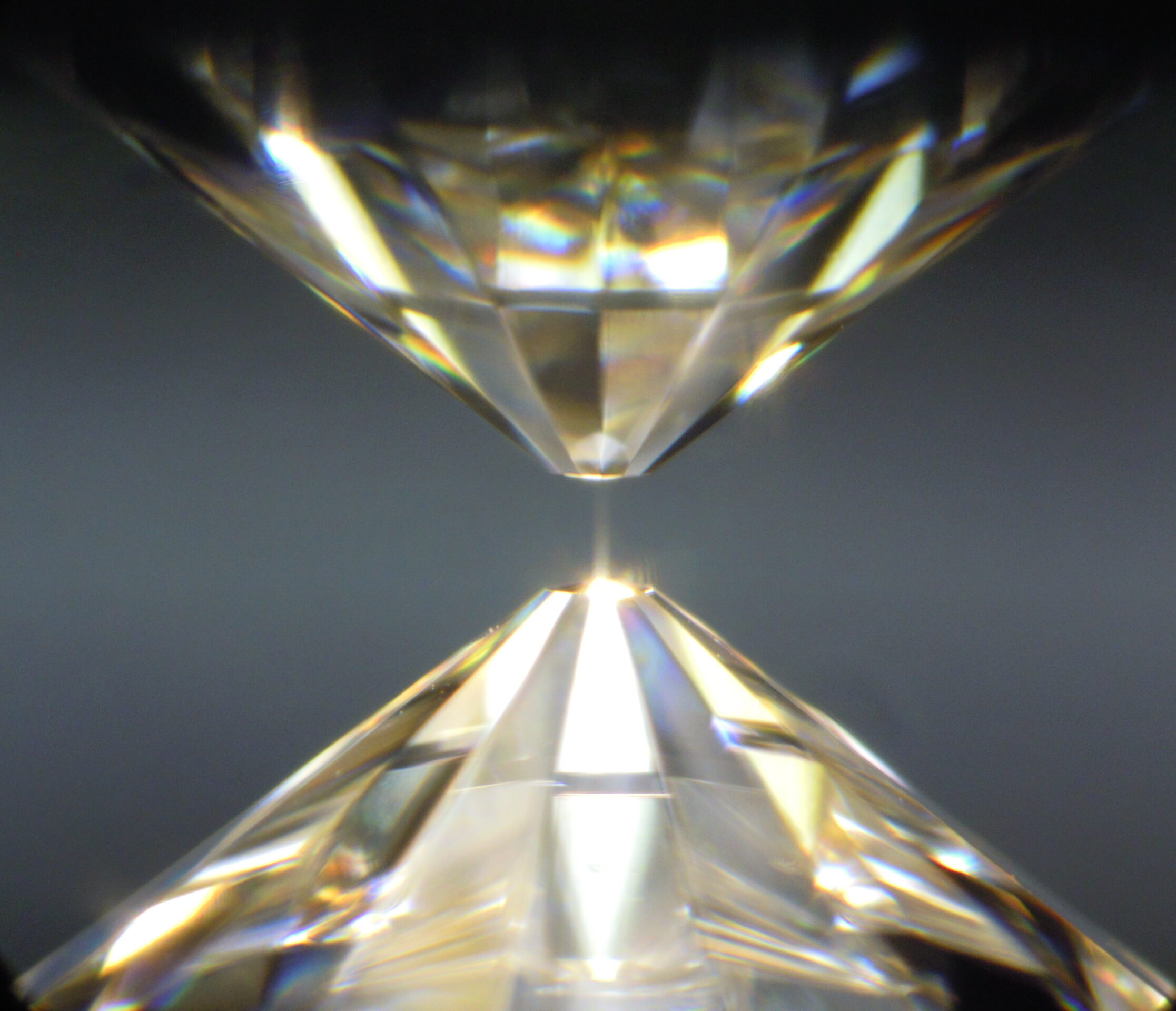How was the Earth formed from its building blocks, the meteorites? An important piece of information lies in the deep Earth, the central core (Pressure (P) = 136-364 GPa, Temperature (T) = ~3500-6500 K) (Fig. 1).

Comparisons of the density between the Earth’s core and pure iron indicate that the Earth’s outer core and inner core areless dense than pure iron by 7.1% and 4.5%, respectively, giving rise to an idea that the Earth’s core consists of iron(+some amount of nickel) and light element (Birch, 1952; Komabayashi, 2014) (Fig. 2). Potential light elements are silicon, sulphur, oxygen, carbon, and hydrogen due to their cosmochemical abundances (Li and Fei, 2007, and references therein).
Dissolution of light elements into an iron-rich core largely depends on how the core is formed. The Earth was formed by accretion of meteorites at 4.6 billion years ago. During the accretion stage, the Earth was subjected to extensive melting; this is known as the magma ocean stage. The light elements in the Earth’s core should reflect the thermodynamic conditions (e.g., P, T, and oxygen fugacity) of the last equilibration between liquid silicate and liquid iron, i.e., at the bottom of the magma ocean. As such, the identification of the kinds and amounts of the light elements in the core places constraints on the origin, formation, and evolution of the Earth. The composition of the core and nature of the ‘light element’ has been a major unresolved issue in Earth Science for the past 60 years (Birch, 1952). In spite of more than 300 articles published (Hirose et al., 2013), the conclusions are diverse mostly because of experimental difficulties and lack of reliable thermodynamic models for iron-light element systems.

The identification of light elements in the core is also influential in the origin of the geodynamo and hence in the habitability of a planet. According to geodynamic calculations (Lister and Buffett, 1995), the convection of the liquid outer core would be driven mostly by the compositional buoyancy due to crystallisation of the inner core (Fig. 1). The core density deficit is smaller for the inner core (Fig. 2); hence the light elements should be preferentially partitioned into the outer core upon crystallisation of the inner core. This mechanism is important when we consider the habitability of a planet. The convecting liquid iron core generates the magnetsphere (Fig. 1), which is protecting life on the surface from the harmful solar wind. Therefore, for a planet, just being at an appropriate distance from the central star which stabilises liquid H2O is not the sufficient condition to be habitable. A question is which light element would meet the density relations above? With these reasons, “light element in the core” is not a conventional question, but also rather new question as to making a planet habitable.
The key research questions that we will address are:
1. What are the thermodynamic properties of iron and iron-light elements alloy under core P-T conditions?
2. What are the light elements dissolved in the Earth’s core?
3. How was/is the origin, current state, and evolution of the Earth’s core?
4. Do other terrestrial planets’ cores involve the same light elements as in the Earth’s core?
